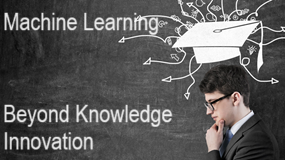Deep learning is a subset of machine learning that utilizes artificial neural networks with multiple layers (hence “deep”) to learn and extract features from data. It has gained significant attention and popularity due to its ability to automatically learn hierarchical representations of data, which allows for more effective feature extraction and modeling of complex relationships in large datasets.
Here are some key characteristics and concepts associated with deep learning:
- Neural Networks: Deep learning models are typically composed of artificial neural networks, which are computational models inspired by the structure and function of biological neural networks in the human brain. These networks consist of interconnected nodes (neurons) organized into layers.
- Deep Architectures: Deep learning models have multiple layers (usually more than three), including input, hidden, and output layers. These layers allow the network to learn hierarchical representations of data, with each layer extracting increasingly abstract features from the input data.
- Feature Learning: Deep learning models are capable of automatically learning features from raw data, eliminating the need for manual feature engineering. This is achieved through the iterative process of forward propagation (processing input data through the network) and backpropagation (updating model parameters based on the error signal).
- Representation Learning: Deep learning excels at learning representations of data that capture the underlying structure and patterns in the data. These learned representations can be used for various tasks such as classification, regression, clustering, and generation.
- Scalability: Deep learning models are highly scalable and can handle large volumes of data with millions of parameters. They can be trained on powerful hardware accelerators such as GPUs (Graphics Processing Units) or TPUs (Tensor Processing Units) to speed up the training process.
- State-of-the-Art Performance: Deep learning has achieved remarkable performance in various domains, including computer vision, natural language processing, speech recognition, and reinforcement learning. It has enabled significant advancements in tasks such as image classification, object detection, machine translation, and game playing.

